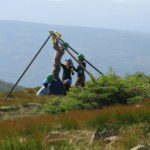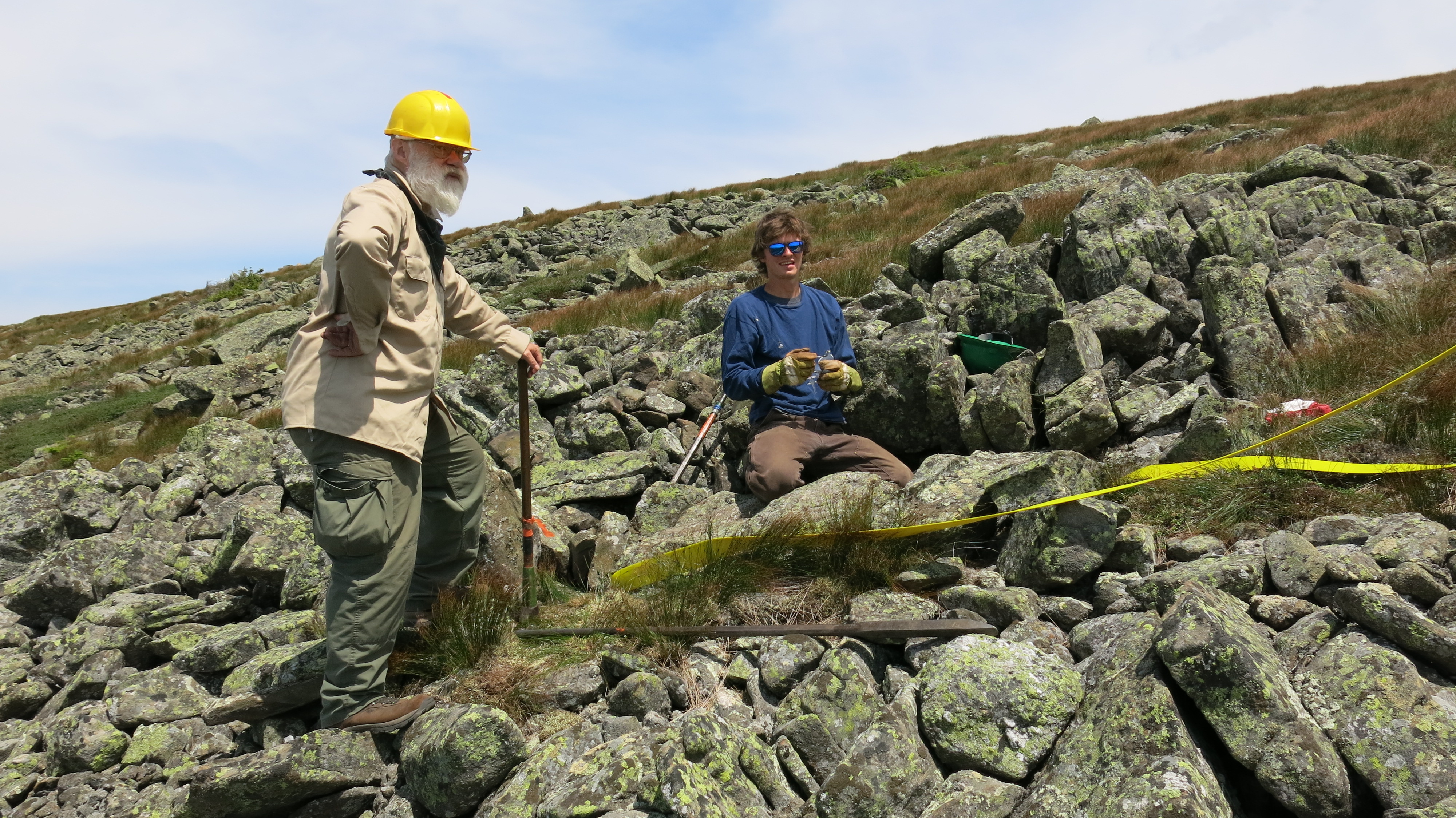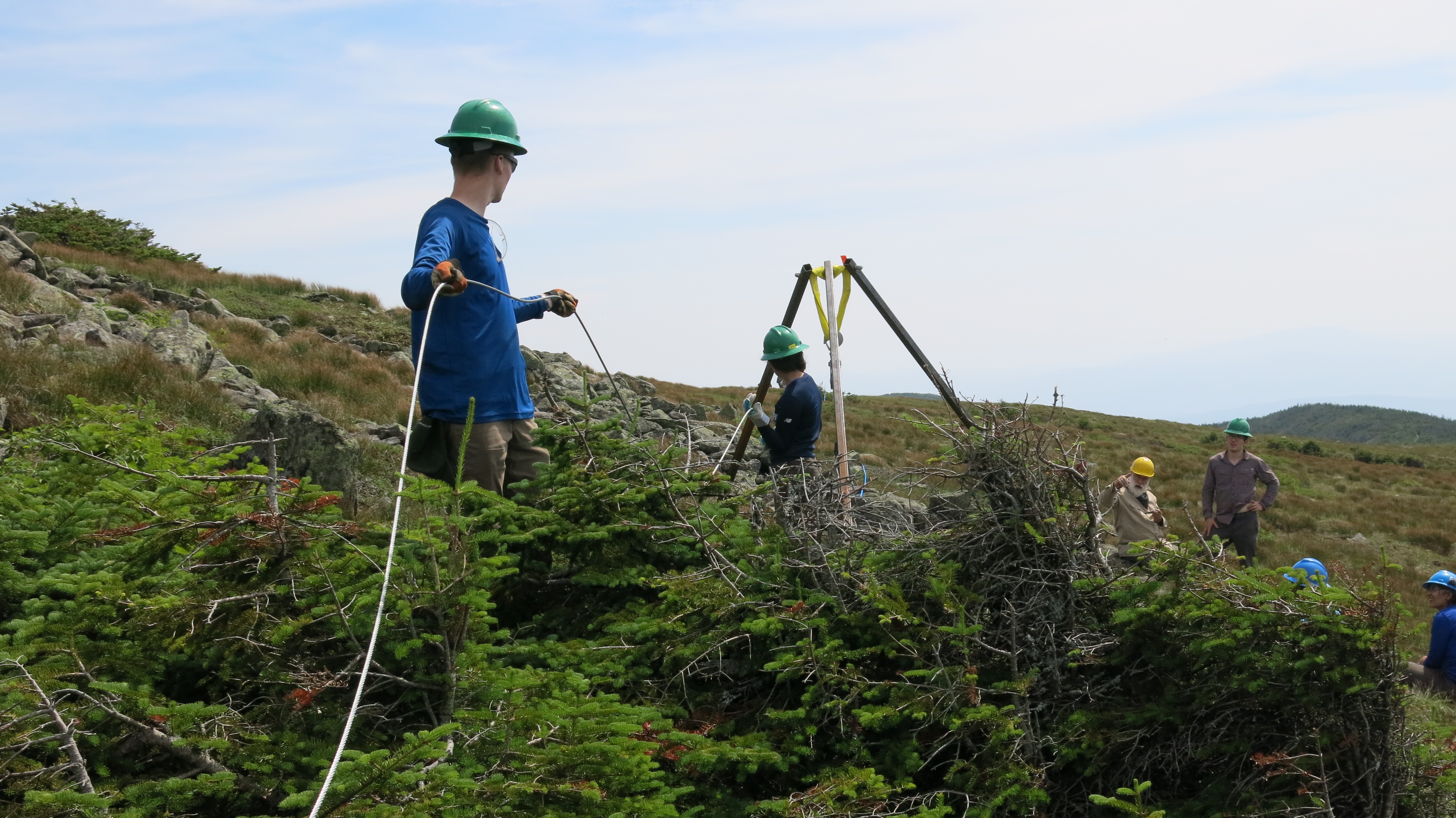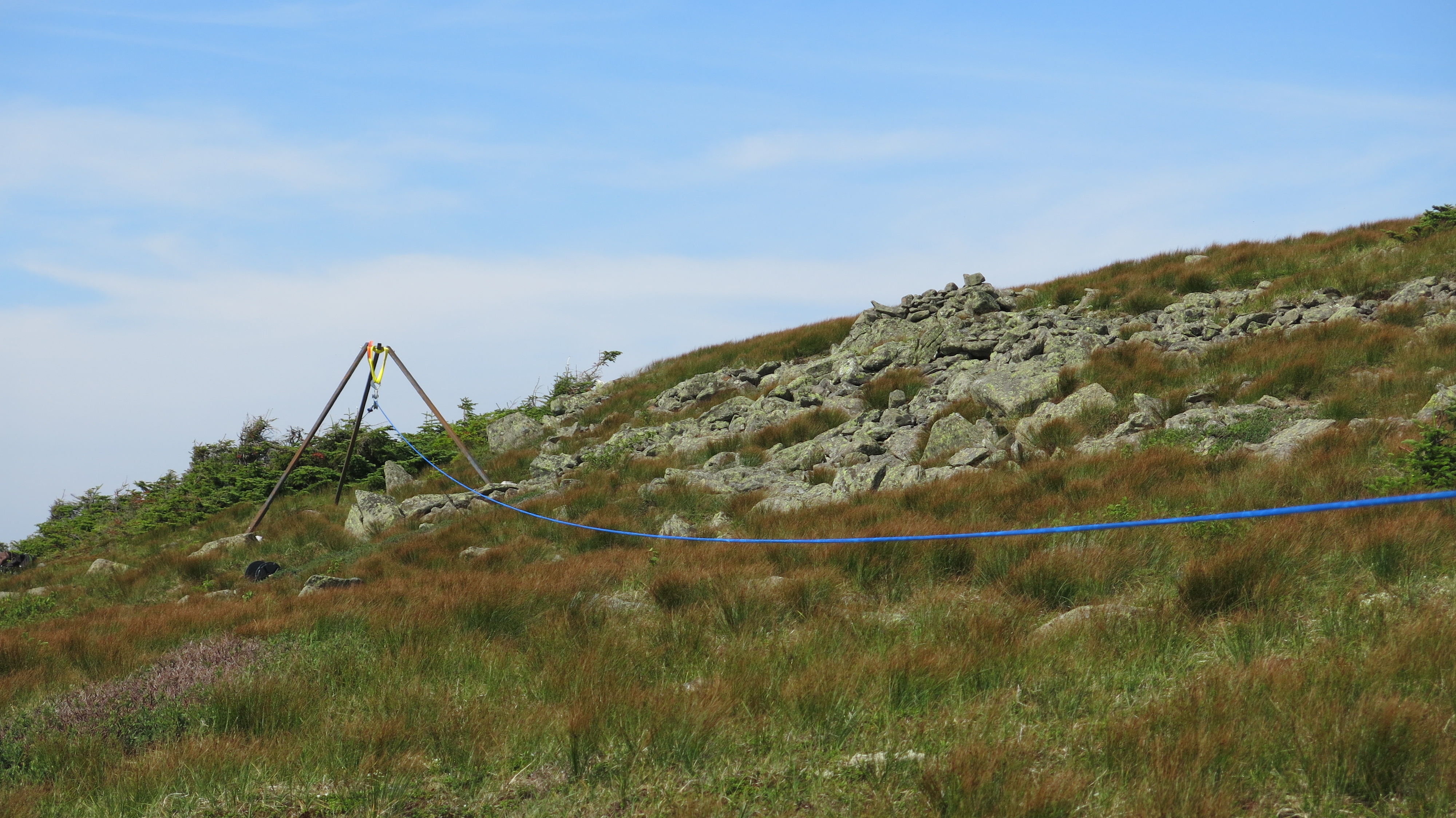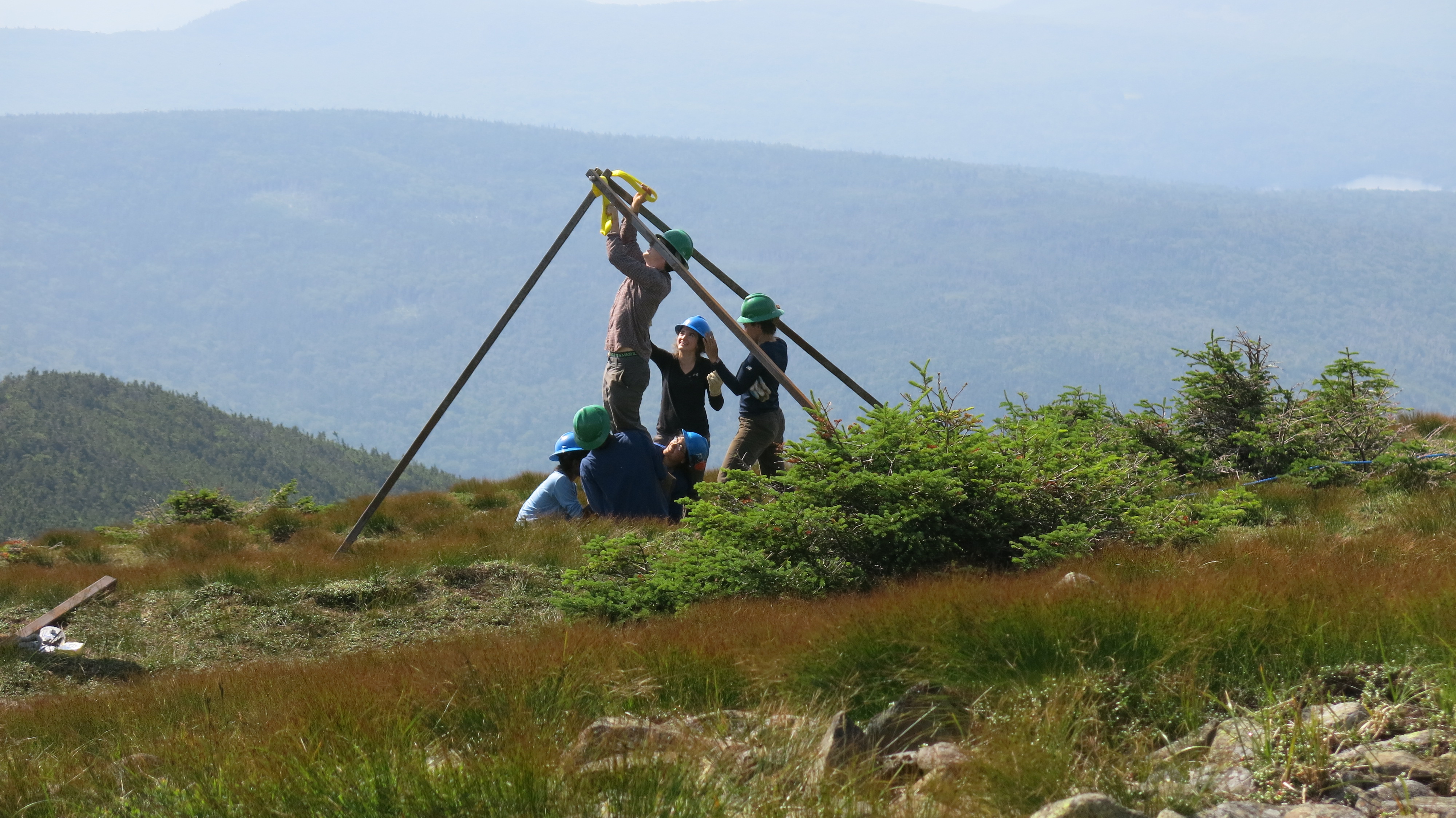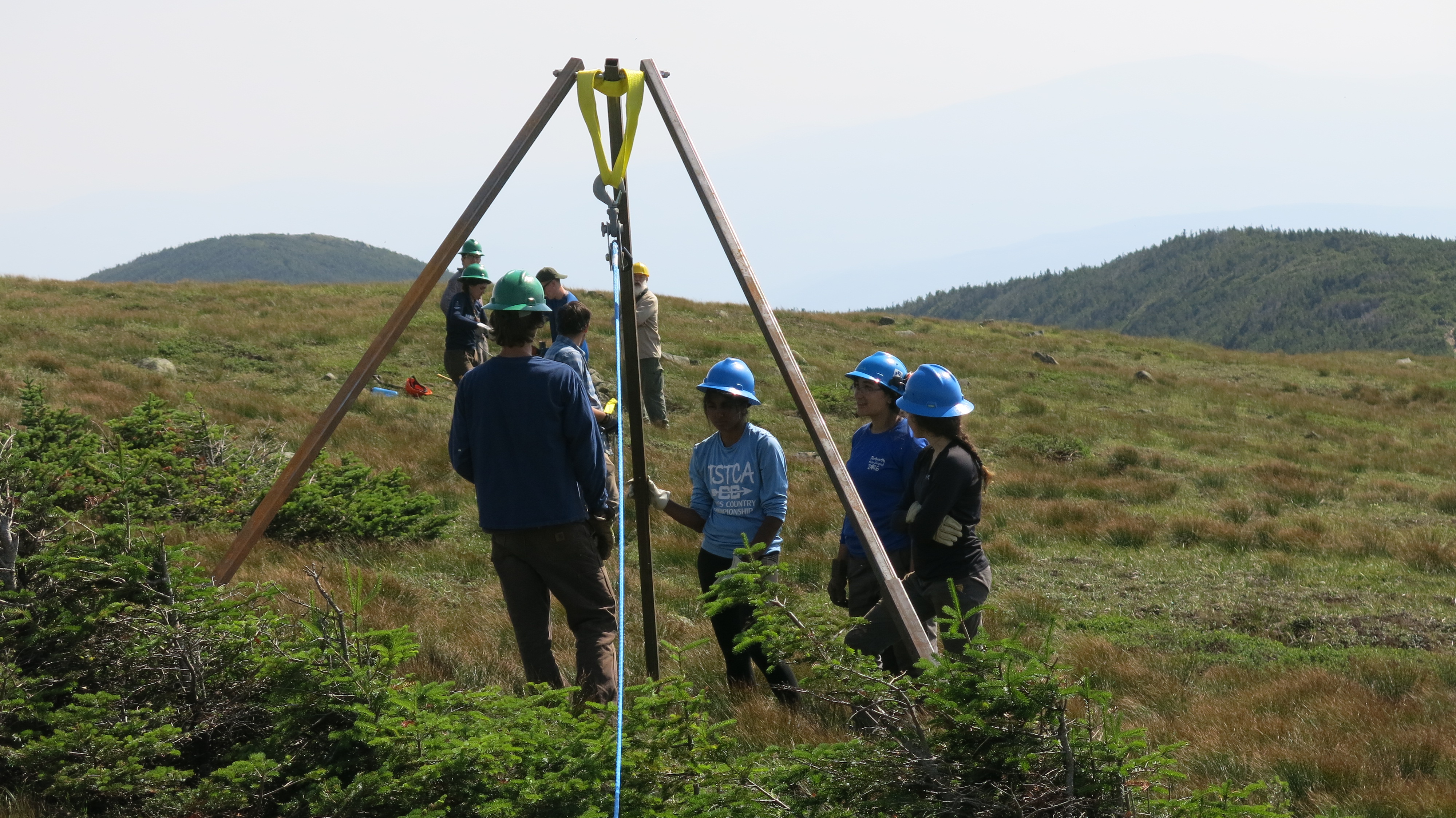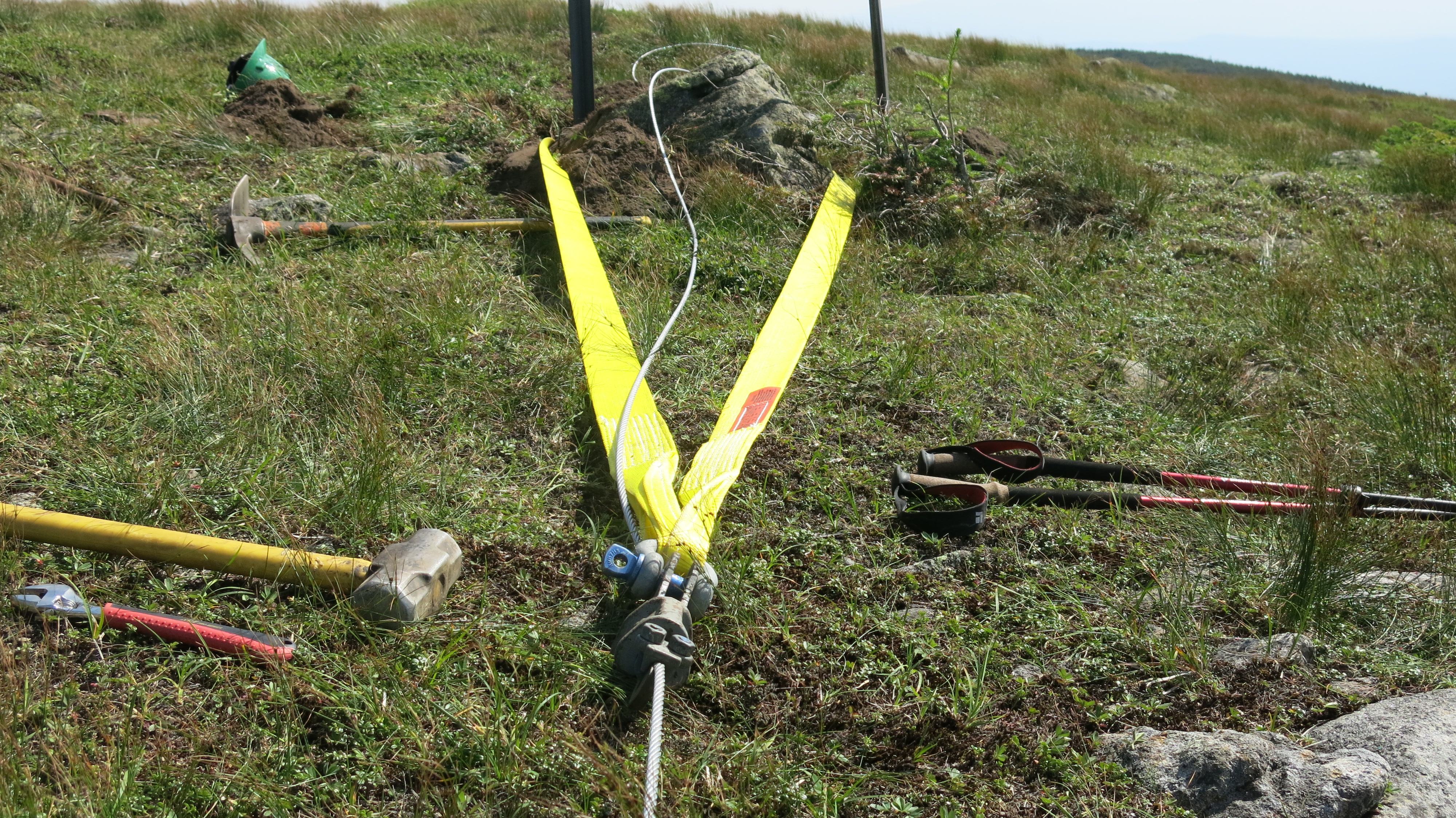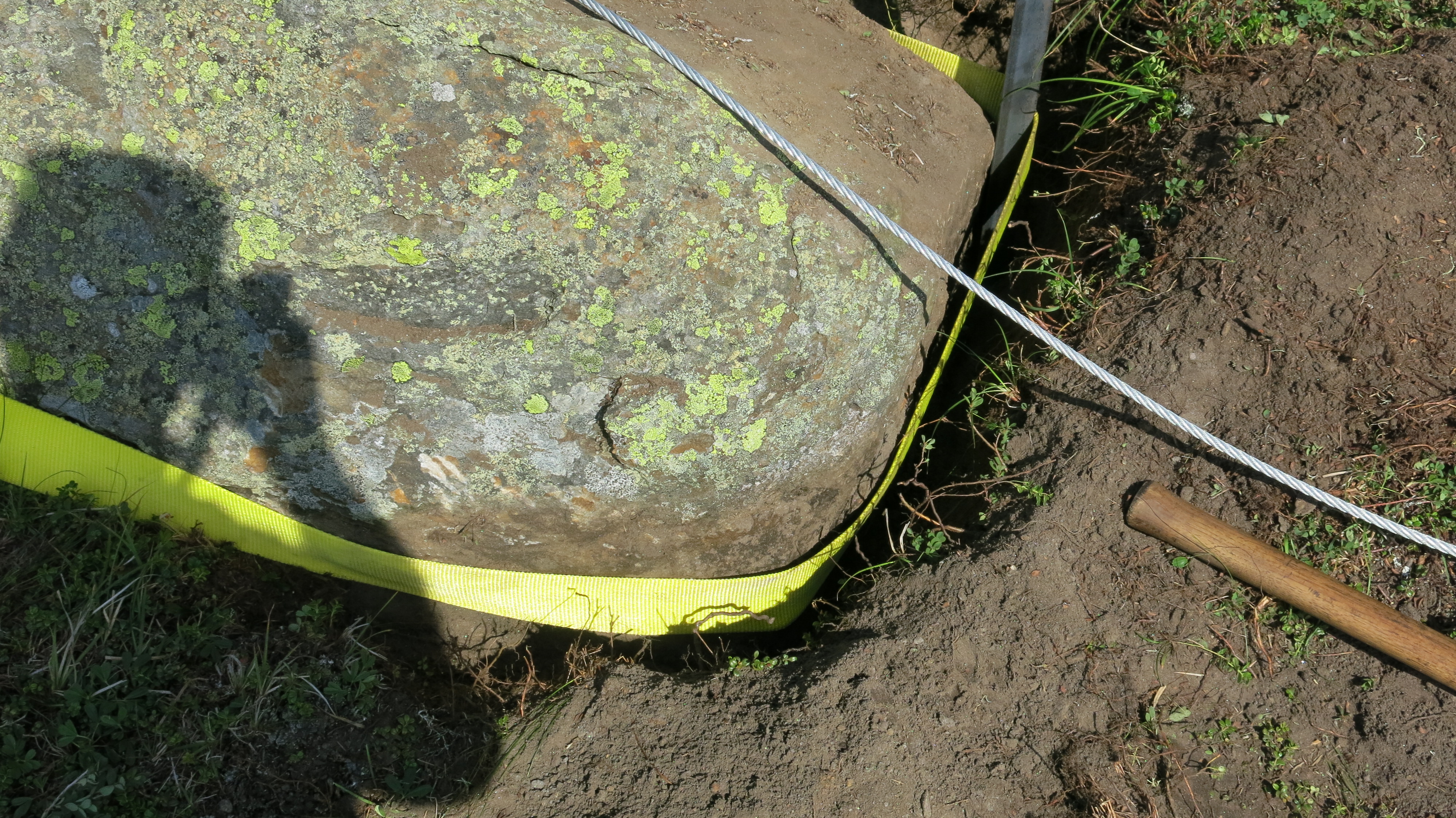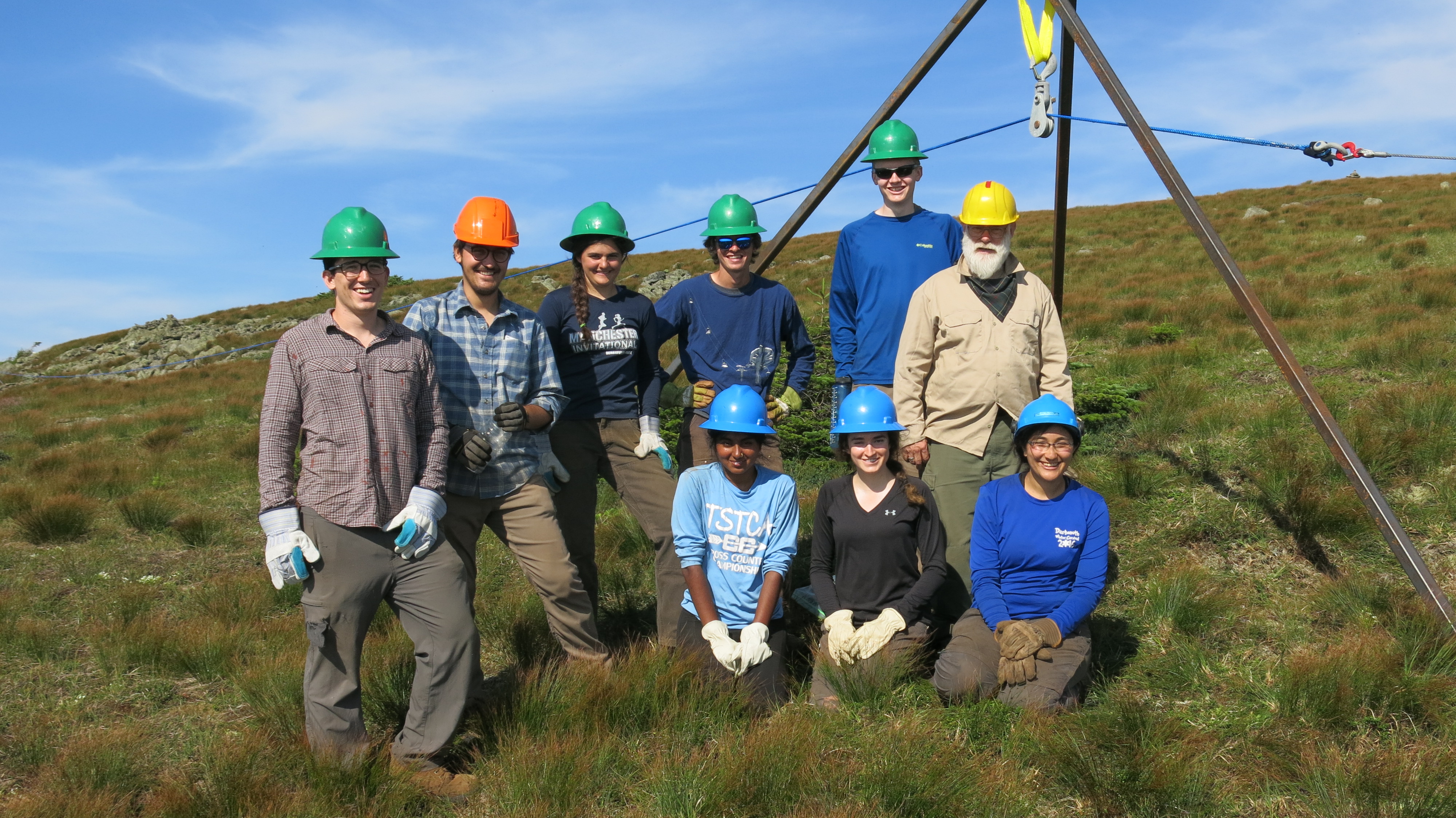Word got around that two of us took the basic rigging class by OBP Trailworks for the White Mountains Trail Collective on June 11-13. We were available when the Dartmouth Outing Club needed a teacher for their paid summer trail crew of undergraduates to learn to rig and work an alpine rigging system on the tundra atop Mt. Moosilauke. After several conversations and much emailing and research we were able to orient them and hand out study documents on the evening of July 15 at the Moosilauke Ravine Lodge, next door to their bunkhouse. We delved into the concepts of risk vs. skill, leadership styles, and the dangers of rigging making everyone responsible for everyone’s safety, with each worker empowered to call “stop” if they see something unsafe, as in the Forest Service job hazard analysis. Next morning at 8 we started up Gorge Brook Trail, hiking up 2400 feet over 3.7 miles to arrive at noon.
Alpine rigging uses tripods to hold up a wire rope above the land so loads of rock slung under a pulley can roll down it and be used to add erosion control fixtures like steps and waterbars to a trail. Down in the woods we use two trees the right distance apart. The system is made up of a big rock to anchor one end with a 4″ by 30′ eye-and eye nylon sling around it. Next is a Griphoist human-powered winch that grabs a special wire rope to lower the skyline to attach a load then raise the skyline until the load rolls down it over the tundra,. Then we have the actual 200′ skyline between the two tripods, and another wire rope from the downhill end of the skyline to attach to a sling around the downhill anchor rock.
By referring to our manuals, the invoice for the components, and a phone call to the supplier, the crew laid out the system, anchored it, and raised the skyline to pulleys hung from the tripods. Next day was thunderstorms, so the rest of this story belongs to them. I hope the photos are interesting, because the setup sure was fun.

